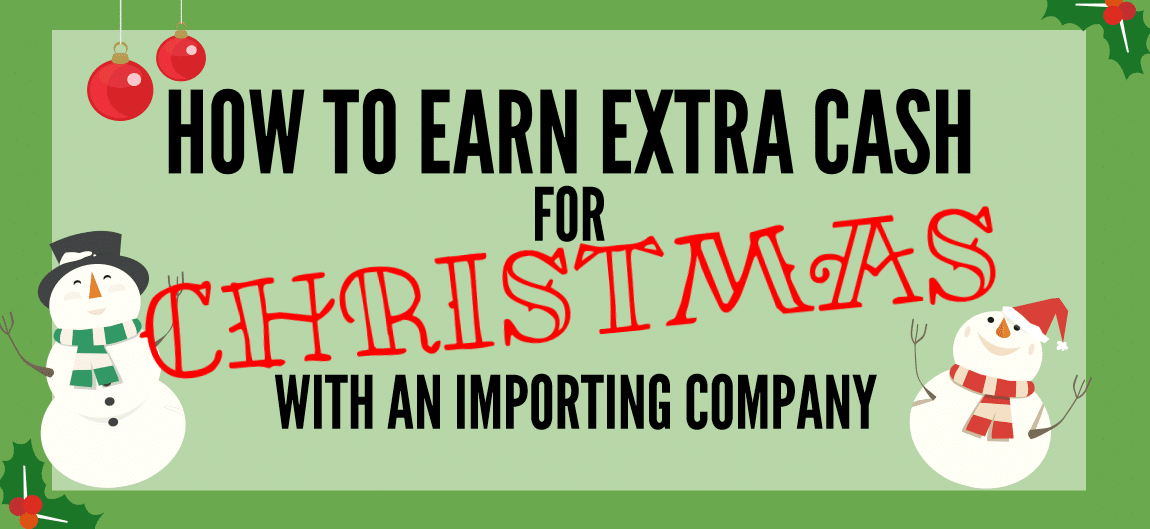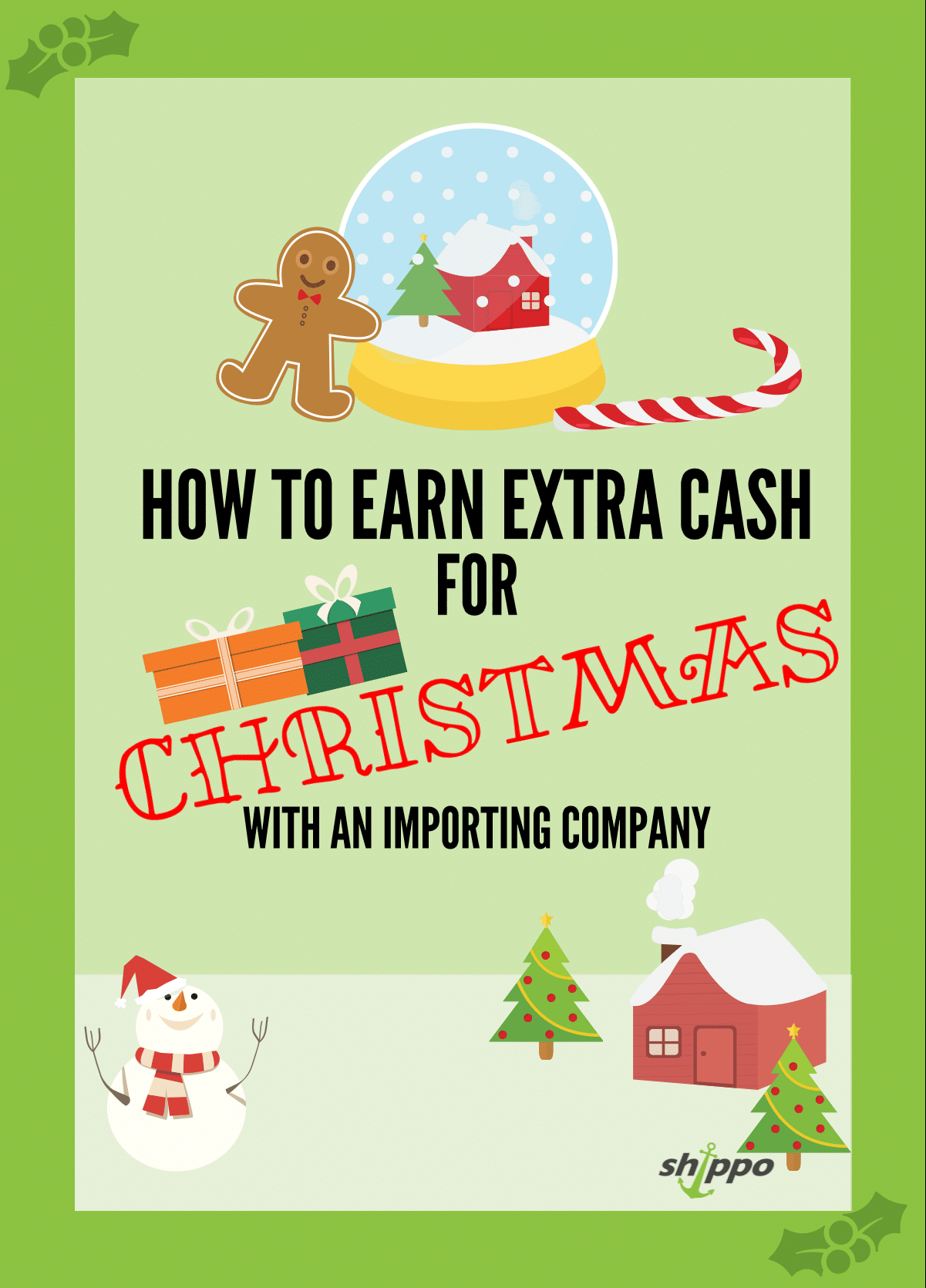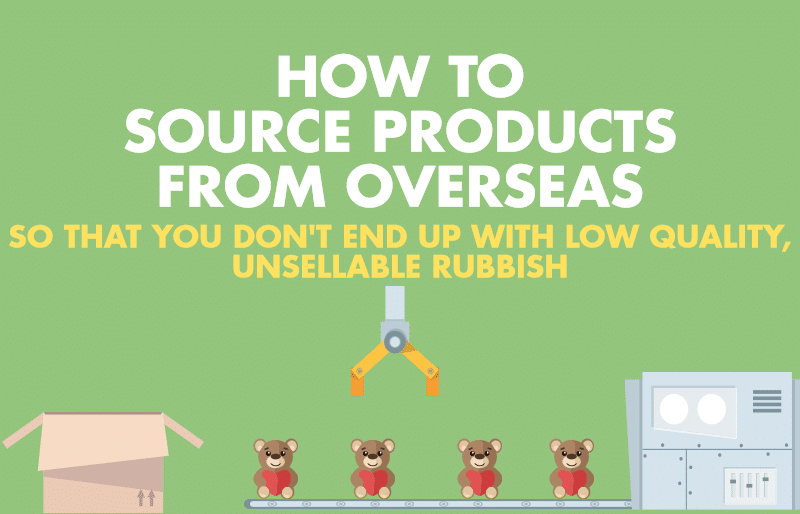Does the prospect of Christmas fill you with angst? Are all those bills, store cards and gift receipts already piling up in your mind . . . along with the figures disappearing from your bank account? We get it. In Britain, the average person spends over £860 on Christmas; that’s a lot! If you’re trying to minimise the damage that’s looming or earn some extra money to pay for Christmas, you should consider starting your own side business. Today, we’re bringing you one of the most profitable side hustles, especially over the seasonal period – an importing one.
check out these spending trends – christmas sees a BIG bump! #smallbusiness #entrepreneur pic.twitter.com/7MjCsfK3xy
— Shippo (@Shippo_uk) 28 September 2016
During the holidays, people are looking to buy gifts – so jump on the trend and start selling them. With the help of this useful guide (and us), it really couldn’t be any more simple!
First off . . .
What is an importing business?
The structure of an importing business is one that, even if you’re unaware of it, you are definitely familiar with. It’s a business wherein you buy goods from overseas (eg. China) and sell them for a profit. Many companies do this; clothing stores, toy retailers – even Apple make their phones in a Chinese factory!
You can do this too! All it takes is finding a wholesale supplier, buying your product of choice and flipping it over here for cash. A popular way to do this is through leading E-Commerce websites like Amazon and Ebay, but you can do this through your own website or another platform too.
And is running an importing business legal?
Absolutely! If it weren’t, a vast majority of the companies you see today wouldn’t be operating. The only legal issues you are likely to run into are Intellectual Property laws, which cover things like counterfeits and copyrighted material. You can read all about IP Laws and what is covered under them here. Any other issues with your goods would be quality issues (for example: electrics with dodgy wiring will not be allowed into the country). The process itself, however, is completely legal! Our complete guide to making sure your products are up to Custom’s standards is here.
Before you can start an importing business, however, you will have to register as a business or sole trader.
Now that we’ve covered that, onto the steps of starting your own import business! We’ve created a nice colourful infographic to share the simple steps to starting up your very own import business – and then we’ll expand on the points raised below.
1. Decide what products to sell
Arguably the most important step here – deciding what products to sell. As we’re purely focusing on earning as much money as possible during the Christmas period, we aren’t going to worry too much about branding and unique product design. If you do want to continue and expand your importing business after Christmas, however, you could look into creating your own branded products; if you can design it, someone can make it!
What you should do for now is try to predict the market; what will people be buying and how will you meet that need? An example of this is toys. At Christmas, a lot of parents will be buying gifts for their kids – which means there will be a bigger demand for toys. Bear in mind that this is a double edged sword – you will have to factor in things like competition and how occupied the market already currently is. Do a little bit of market research – even if it’s just asking around, seeing what people are interested in buying and getting that for yourself.
A brilliant tool for market research is Google Trends. You can type in a search term and see the volume of interest it has generated over a period of time. Note – the 100 is a peak frequency of search, but is not a figure in itself. The 100% represents when a term reaches the height of its interest; regardless of the actual value of that interest. So 100 for a less common search such as Battery Charging iPhone Case may be 100,000 searches, but 100 for the search for iPhone 6 may be 1,000,000. This is just to clarify; Google trends is not a keyword volume tool, but a tool to measure trends in people’s interests.
As an example, let’s show you how “Headache”, “Green Tea” and “Eye Test” align. As someone researching product demand, this could help you identify the kind of trends you’re looking for and your potential customer’s activities.
Now, you may think that these three things are completely unrelated. Yet this graph clearly shows that there is a strong correlation between them. This could be because of a chain of events (for example: people could watch more television at a certain time of year, which could lead to them straining their eyes. The strain could lead to them having headaches; a common herbal remedy for headaches is green tea) or searchers’ characteristics may possess (for example, age; elderly people may be more likely to get headaches, drink green tea and need their eyes tested) – or there could be no reason for it at all; the three searches could just go hand in hand.
Regardless, you now know that there is a clear link between the three. If you were selling green tea, you could branch out into marketing it as a headache solution; maybe write a few blog posts about how green tea is a natural solution for migraines. Likewise, if you were an optician, you could start targeting customers with the idea that their headaches may be cause by eye strain. You could even target them right before the peak periods, so that when the demand hits you’re at the forefront of their mind.
This is just an example of how powerful a tool like Google Trends can be.
If you want a more in-depth guide to sourcing products and deciding which products are for you, read this one we wrote.
2. Pick a platform
There are many platforms you can use to sell your goods. Each platform comes with its own pros and cons and each platform attracts a different audience, so look around and decide what’s best for you. Popular e-commerce platforms include:
Certain products might perform better on different platforms and you may want to target a certain audience; for example, people on Ebay are often looking for a deal so cheap products might do well on that platform.
3. Source your products
Once you know what you want to sell and where you want to sell it, it becomes an issue of how you’re going to find it. Sourcing your products is one of the essential stepping stones for your business as finding the right manufacturer is key. (And, in case you have no idea what we mean by any of this, sourcing is where you find your product.)
If you want to start a profitable importing business, you’ll need to buy wholesale. This means that you buy a lot of orders for much lower than their retail value price. For example, a white T-Shirt might cost £3 to buy from China retail-price, but only £0.45 wholesale, if you buy over 400 T-Shirts. You need to find a wholesale supplier that makes the goods that you want.
The popular wholesale marketplaces that our customers use include:
Your manufacturer directly controls the quality of your product, how quickly your product is shipped and whether or not you even receive it. It’s important not to breeze over this stage and just pick the first one you see. We’ve created a guide to sourcing your products – from thinking what products it’ll be beneficial for you to source to picking the right manufacturer to supply them for you that we recommend you read.
4. Make sure you’ll get your products on time
Depending on where you source your products from, the time it takes to ship internationally varies. An example of this is when importing goods from India; the two main ports that are used when importing from India are New Delhi and Mumbai. New Delhi is 1000km from the nearest sea and, as a result, the containers from the New Delhi CFS (Container Freight Station) have a sizable journey before they can be put on the boat, whereas Mumbai is right next to the coast. This will impact cost – but also the time it takes to ship. The same goes for importing from different places in China. Depending on the geography of where your goods are shipping out from, the shipping time can vary – make sure you plan accordingly.
However, you also have to factor in production time. Certain products take longer to be manufactured than others. When ordering your goods, make sure they’ll arrive on time – you don’t want to order start-up stock for a Christmas business only to have your goods arrive in January!
5. Make sure you understand the importation process
This is where you need to be very careful. Understanding the importation process is the key to not getting caught out. If you can understand everything that is going on, you will know how much you’re going to have to pay, why and how to minimise these costs. We operate transparently so that you know where your money is going – and you know upfront how much it’s going to cost you.
To help our customers, we have a written a post explaining how much it will cost you to import your goods. However you also need to know what UK duties and taxes you’ll need to pay, so we have a free calculator to help you anticipate the costs ahead of time.
As a first time importer, it’s absolutely essential to understand the importation process so that you can spot a dodgy offer from a mile away. A common problem with importing, from China especially, is the supplier offering to ship to a UK port for a ridiculously low price and then the buyer being hit with over 5x how much they thought they were going to have to pay in hidden charges once their goods reach the UK. (This isn’t a scam, per se, as the supplier is not aware that the buyer gets hit with these costs, but it is avoidable.) We’ve explained the entire process and how to avoid hidden fees here.
6. And use us to make it as easy as possible!
Let’s face it, importing can be intimidating. It’s a multi-step process that seems really complicated and it can feel like there’s a lot of room to go wrong. However, using a freight forwarding company like us essentially eliminates all the confusion.
Remember what we said about hidden fees? Well, we don’t do that. If you are thinking about starting a Christmas importing business, give us a call (the advice is free!) – and, if you actually do, use us to help make the process as simple, transparent and easy as possible. We’re the company that looks after your goods from the supplier’s doors to your feet. Want to know why we’re the best? Let us tell you!
We hope you found this post helpful and you have a brilliant (and affordable) Christmas. If you found these tips useful, don’t forget to share them – and follow us on social media!




